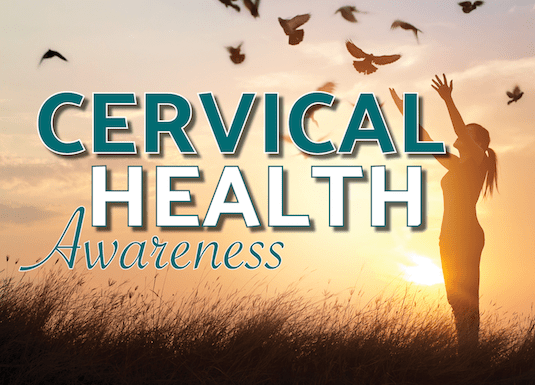
Many of us know someone who has or has had some form of Cancer. Cancer is a disease of the body in which cells grow out of control to produce tumors and other inflammations. Cancer is always named after the part of the body it is created in, but can spread to other parts of the body. Cervical Cancer originates in the he cervix, which is the narrow end of the uterus.
Approximately, 9.5 per 100,000 cases of Cervical Cancer are American Indian/Alaska Natives, compared to 6.5 per 100,000 Non-Hispanic Women in the US (CDC, 2016). In the state of Wisconsin, 18.5 per 100,000 American Indian females have Cervical Cancer and 3.8 per 100,000 have died result of Cervical Cancer. Many Cervical Cancer cases are caused by HPV. HPV is the Human Papilloma Virus. HPV is the most common sexually transmitted infection, and many people get it in their lifetime (CDC, 2016). This virus usually causes no symptoms, which makes it hard to identify. HPV typically goes away on its own, but there is a chance it will linger and over time can cause cervical cancer.
Things that increase a women’s risk to develop HPV include:
- Smoking
- Having HIV
- Using Oral Contraceptives for a long period of time (five or more years)
- Having three or more children.
Cervical cancer is preventable in most western countries because screening tests and vaccines can be used to prevent the HPV infections. There are many things women can do to lessen her chances of cervical cancer, including getting a Pap smear at the age of 21 and usually every 3 years following. Approximately 70.1% of American Indian/Alaska Native women have had a Pap Smear within the past 3 years (CDC, 2016). A Pap smear is procedure done in a clinic office to test for precancerous cells. Another screening tool used is a HPV test along with a Pap smear. Two HPV vaccines are available to protect women and men from the virus. Most vaccines are recommended for females ages 13 to 26 years of age, and should be the same brand for all three doses whenever possible. Women who are vaccinated should still receive recommended Pap Smears as directed by their provider.
Actions women can do to lessen the risk include:
- Not smoking
- Using a condom(male and female condoms) during sex
- Limiting the number of sexual partners
Early in the progression, cervical cancer may not have any signs or symptoms. As the disease progresses, you may notice vaginal bleeding or discharge that is not normal to you. An example is bleeding regularly after sex. Other signs and symptoms may include low back pain, abdominal pain or bloating, or heavy menstrual period.
If you or a loved one is diagnosed with this cancer, a specialized oncology provider will take over your care. The prognosis for this cancer is based upon the multiple stages that the cancer may be staged in. There are treatment options available for women at all stages of cancer and it is important to remember that every individual is different. These are only estimates and treatment options will vary.
Please talk to your doctor if you are concerned about cervical cancer, and follow through with regular and recommended screenings. Encourage women around you to receive the vaccine if able and always practice safe sex.
If you have questions regarding Cervical Cancer or its prevention or treatment please contact your primary care provider or contact a Community Health Nurse at 715-478-4355.
Sources
- Center for Disease Control and Prevention. 2016 Cervical Cancer. Retrieved from http://www.cdc.gov/cancer/cervical/
- Center for Disease Control and Prevention. 2016. Healthy United States, 2015. Retrieved from https://www.cdc.gov/nchs/data/hus/hus15.pd
- Center for Disease Control and Prevention. 2016. Genital HPV Infection – Fact Sheet. Retrieved from https://www.cdc.gov/STD/HPV/STDFact-HPV.htm
- NCI, 2016. Seer Cancer Statistics Review, 1975-2013. Tables 2.15 through 24.15. Retrieved from https://seer.cancer.gov/csr/1975_2013/sections.html
- Survival rates for cervical cancer, by stage. American Cancer Association 11/16/16. http://www.cancer.org/cancer/cervicalcancer/detailedguide/cervical-cancer-survival
